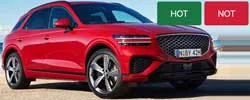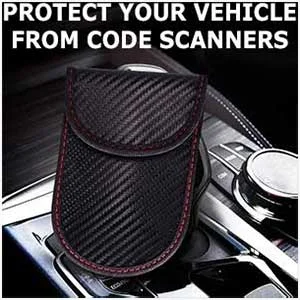-

-
Hint: Use a descriptive title for your new message
If you're looking for help and want to draw people in who can assist you, use a descriptive subject title when posting your message. In other words, "I need help with my car" could be about anything and can easily be overlooked by people who can help. However, "I need help with my transmission" will draw interest from people who can help with a transmission specific issue. Be as descriptive as you can. Please also post in the appropriate forum. The "Lounge" is for introducing yourself. If you need help with your G70, please post in the G70 section - and so on... This message can be closed by clicking the X in the top right corner.
- Genesis Forums
- Hyundai Genesis Sedan Forums - 3.8 V6, 4.6 V8, 5.0
- General 2009-2014 Hyundai Genesis Sedan Discussion
You are using an out of date browser. It may not display this or other websites correctly.
You should upgrade or use an alternative browser.
You should upgrade or use an alternative browser.
Alignment issues
- Thread author Prezdmm
- Start date
AgentSmith007
Registered Member
- Joined
- Sep 21, 2012
- Messages
- 567
- Reaction score
- 122
- Points
- 43
- Location
- Motown/HockeyTown
- Genesis Model Year
- 2011
- Genesis Model Type
- 1G Genesis Sedan (2009-2014)
I have the same issue after putting new tires and doing alignment and dealership mechanics can't find the cause.
Looking to update and upgrade your Genesis luxury sport automobile? Look no further than right here in our own forum store - where orders are shipped immediately!
srobak
Former 2015 G80 owner - soon to be G90?
- Joined
- Aug 2, 2015
- Messages
- 1,716
- Reaction score
- 352
- Points
- 83
- Location
- Packerland
- Genesis Model Type
- 2G Genesis Sedan (2015-2016)
PaFromFL
Registered Member
- Joined
- Jan 7, 2015
- Messages
- 117
- Reaction score
- 7
- Points
- 18
The inside edge of my rear tires wore right down to the steel after about 15,000 miles (I should have rotated them sooner but didn't look closely enough at the inner edge). The rear alignment didn't seem to be that far out of whack, but the rear camber and total toe were at the minimum allowed values. I'm guessing that the camber/toe combination was enough to scrub off the rubber, the tires were defective, or the 2G Genesis just tends to wear out tires that way. The car drove fine before and after the alignment, but the original Hankook tires started sounding more like snow tires after 20,000 miles. (Sorry about the mangled "table". The column spacing disappeared after posting. The L/R rear camber was -2 -2.2 before and -1.5 -1.4 after, while the total toe went from 0.2 to 0.43.)
Front Spec Min (deg) Max (deg) before (deg) after (deg)
left camber 0 -1 -0.04 -0.4
right camber 0 -1 -1.1 -0.8
left caster 7.6 9.1 8.5 8.5
right caster 7.6 9.1 8.2 8.2
left toe-in 0 0.2 0.29 0.07
right toe-in 0 0.2 0.23 0.09
total toe 0 0.4 0.52 0.16
steer ahead -0.05 0.05 0.03 -0.01
Rear Spec Min (deg) Max (deg) before (deg) affter (deg)
left camber -2 -1 -2 -1.5
right camber -2 -1 -2.2 -1.4
left toe-in 0.1 0.3 0.02 0.21
right toe-in 0.1 0.3 0.19 0.22
total toe 0.2 0.6 0.2 0.43
thrust angle -0.09 -0.01
Front Spec Min (deg) Max (deg) before (deg) after (deg)
left camber 0 -1 -0.04 -0.4
right camber 0 -1 -1.1 -0.8
left caster 7.6 9.1 8.5 8.5
right caster 7.6 9.1 8.2 8.2
left toe-in 0 0.2 0.29 0.07
right toe-in 0 0.2 0.23 0.09
total toe 0 0.4 0.52 0.16
steer ahead -0.05 0.05 0.03 -0.01
Rear Spec Min (deg) Max (deg) before (deg) affter (deg)
left camber -2 -1 -2 -1.5
right camber -2 -1 -2.2 -1.4
left toe-in 0.1 0.3 0.02 0.21
right toe-in 0.1 0.3 0.19 0.22
total toe 0.2 0.6 0.2 0.43
thrust angle -0.09 -0.01
homeofstone
Registered Member
One and even two or more tires in a set can be bad and cause a pull even when the tires are brand new. see this link http://www.aa1car.com/library/tires2.htm
aggiebob79
Hasn't posted much yet...
- Joined
- Jul 19, 2013
- Messages
- 4
- Reaction score
- 0
- Points
- 0
I have the same issue with my 2012 R-Spec, right pull. The dealer said everything is within manufacturer's specs. The regional service manager kept the car for a whole day and swapped tires around, including pulling OEM tires from a showroom car. This still did not totally solve the problem. The regional managers' solution, put about 4 extra pounds of air in the right front tire. This helps some, but still has a right pull.
Buford T Justice
Registered Member
My 2013 V6 pulls to the right as well, even after multiple alignments. Haven't really done anything to correct it, tires haven't worn odd (I just checked when I swapped the snow tires on) with seasonal rotations so I'm not too worried about it.
But it is annoying.
But it is annoying.
Mark_888
Registered Member
- Joined
- Jan 9, 2009
- Messages
- 13,335
- Reaction score
- 224
- Points
- 63
- Genesis Model Type
- 1G Genesis Sedan (2009-2014)
I had that problem until I took it to a suspension shop recommended by Costco Tire where I live. They started with the OEM alignment specs, and they did 3 test drives and made adjustments after each one until the car drove straight. OEM specs should only be a starting point, not an end point.My 2013 V6 pulls to the right as well, even after multiple alignments. Haven't really done anything to correct it, tires haven't worn odd (I just checked when I swapped the snow tires on) with seasonal rotations so I'm not too worried about it.
But it is annoying.
Legacy
Registered Member
Had the same issue with my 2010 4.6. Replaced the old tires with Michelin MXM4 and experienced a right pull. Had the closest Hyundai dealer align it THREE times, still pulled to the right. The service manager gave me his standard dopey response. "They all do that". Yeah, right. Took the car to the next closest dealer, they started at the factory settings and took a little extra time to tweak the settings after driving the car. Now, after 30,000+ miles, the tires are wearing true and no pull in either direction. This includes driving after rotations every 7,500 miles.These cars WILL track straight and true, you just gotta find the right shop that will take the time and dial it in. BTW, that next closest dealer is a little further away, but he gets all my business.
pmckechnie
Registered Member
- Joined
- Dec 12, 2015
- Messages
- 432
- Reaction score
- 162
- Points
- 43
- Location
- Matthews, NC
- Genesis Model Year
- 2018
- Genesis Model Type
- Genesis G80
I think the biggest problem with alignments is the aligner. You can not get a good alignment from a $50,000 alignment machine if the person running it is fresh out of HS without any experience.
You need to find a shop with an alignment tech that could get the job done with a carpenters level and a piece of string, using the machine only as a aid.
You need to find a shop with an alignment tech that could get the job done with a carpenters level and a piece of string, using the machine only as a aid.
homeofstone
Registered Member
I think the biggest problem with alignments is the aligner. You can not get a good alignment from a $50,000 alignment machine if the person running it is fresh out of HS without any experience.
You need to find a shop with an alignment tech that could get the job done with a carpenters level and a piece of string, using the machine only as a aid.
I have actually used the string and level method after rebuilding the front end on my 65 Mustang; then took the car to a shop for alignment. To my surprise it only needed some small adjustments. I think these days some techs don't understand the geometry of suspensions on cars.
G
G-126788
A pull to either side is always never good for safety and wear. It will eat tires prematurely. When the geometry is out of whack the vehicle will drift. I learned that toe wears out tires faster than camber. Caster has little effect on wear, keeping all other factors equal. A properly aligned vehicle should never drift and will track ahead and hold the line. To get the most mileage out of a set of tires, mechanics will set the toe and camber to zero and thrust as close to zero as well. This achieves the lowest friction and least wear. Caster cannot be changed in most production vehicles. Tires on rear differentials usually will have zero camber and zero toe, hence least wear.
Great products:
- VIN Check
- Add more horsepower!
- Clean your leather!
- Safe Emergency Charging
- Windshield Repair Kit
- Chemical Guys HydroSpeed Ceramic Quick Detailer
- Chemical Guys HydroCharge High-Gloss Hydrophobic SI02 Ceramic Spray Coating
- Get a dash cam!
- Auto Buyers Market
- Foreign invaders vs USA gangs
- VIN Check
- Add more horsepower!
- Clean your leather!
- Safe Emergency Charging
- Windshield Repair Kit
- Chemical Guys HydroSpeed Ceramic Quick Detailer
- Chemical Guys HydroCharge High-Gloss Hydrophobic SI02 Ceramic Spray Coating
- Get a dash cam!
- Auto Buyers Market
- Foreign invaders vs USA gangs
Featured content
-
-
Thread 'Help us to keep helping you. Your support is essential to our survival.'
- Sal Collaziano
Replies: 29










